Resources
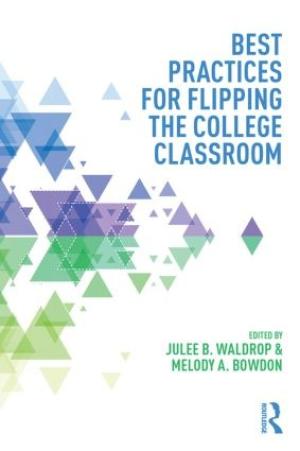
I have a confession to make: I have flipped my courses and agree with Waldrop and Bowdon that using lecture classes as a control in future experiments is probably unethical. On one hand, lectures are ethically questionable. On the other, lectures are essential. So much depends on the details. Personal style, class size, topic du jour, student readiness to explore topics, and so forth. A lecture is necessary in order to deliver particular skills and concepts. In the flipped learning model, educators are more important than ever and teaching can be even more demanding. This is where Best Practices for Flipping the College Classroom speaks to instructors in higher education. The editors have gathered strategies “across a broad spectrum of academic disciplines, physical environments, and student populations…. [in the] hope that this book will inspire further research in other disciplines” (12). Chapters are case studies, with each course described in terms of format, enrollment, instructor’s strategies, and research methods. Each chapter ends with practical suggestions. The disciplines include chemistry and calculus (chapters 2, 3), nursing and psychology (chapters 4, 6), history and economics (chapters 5, 8). A marketing course is covered in chapter 7 and a creativity class in chapter 9. The case studies are bookended by a helpful Introduction, “Joining the Flipped Classroom Conversation” (chapter 1), and two closing chapters: “Student Practices and Perceptions” (chapter 10) and “Conclusion: Reflecting on the Flipping Experience” (chapter 11). Katherine Sauer’s description of her work in her microeconomics classroom (chapter 8) is of particular interest. What she does in her discipline informs and echoes much of what I do as a professor of religious studies. Her fundamental question is simply this: “In order to help my students learn, what is the best use of my face-to-face time with them?” (112). Sauer provides a worksheet to help instructors identify course learning outcomes, intermediate objectives, key terms, and ideas. She also notes the importance of reading guides and careful development of “pre-class materials” (homework assignments in its many forms, from readings to videos to screencasts). Students come to class prepared for work. It is her contention that prepared students are incentivized; students use their completed reading guides (notes!) for success with short quizzes at the very beginning of class. While she does not explicitly reference Bloom’s Taxonomy, she pushes lower levels of the taxonomy (such as quiz content) outside the classroom. She uses class time for activity that is identified by upper levels of the taxonomy: application, analysis, evaluation, and creation. The result is that more material gets covered. Students spend more time outside of class with the material, students arrive prepared, and the class as a whole is ready for work. The classroom becomes a lab (my word, not hers) for active learning through critical thinking, collaboration, and reflection. Students are “primed,” instruction is spontaneous and relevant, and instructors think on their feet. The conclusion (chapter 11) provides the authors’ perspectives on key issues: (1) motivations for flipping, (2) favorite techniques and strategies, (3) motivating students to prepare for class, (4) benefits, challenges, and rewards, and (5) types of support needed. The editors wrap up with final words of advice (151-154). This could serve as both a helpful reference and “go to” guide for flipping a classroom. They write, “prepare to be impressed with what your students produce” (154). Flipping a classroom is not for the faint of heart, but it will enliven your teaching and put you in good company.
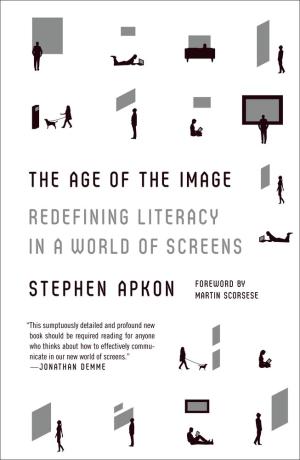
Teachers routinely complain that students do not read well or enough. What they mean by this is that students do not know how to analyze written texts, in part because they fail to engage regularly with written texts. Stephen Apkon’s book challenges this traditional focus on verbal literacy to advocate strongly for visual literacy, particularly in K-12 education. In a world saturated with screens and images to be decoded, Apkon, the founder and executive director of the Jacob Burns Film Center, argues that we ignore visual literacy at our peril. Few would argue with Apkon that we live in “the age of the image,” and in response to our situation Apkon argues for the importance of understanding the grammar of the visual. He does so by examining several interrelated perspectives on images and visual storytelling, such as brain science, advertising, and film techniques. He also provides a history of visual literacy that parallels in many ways the development of visual literacy. Rather than buy into the common parental and academic moral panic over “screen time” used by digital native “screenagers,” he encourages his readers to embrace screens and images by learning intimately how they work. This will benefit both producers and watchers, he argues, and can help classrooms function more seamlessly in our screen-obsessed culture. This book will be useful to teachers who want food for thought but not direct guidance. Apkon notes early on that “As new literacies emerge, they don’t negate more traditional forms of literacy, but rather embrace them wholly” (10) but then goes on to champion what sound like fairly vapid if contextually apt viral videos as examples of visual literacy achieved. Apkon’s bias is understandable, but it seems to leave other literacies in the dust, despite the author’s claims that he’s not doing just that. The chapter devoted to teaching is full of information, including a sketch of the history of technologies in education, but it does not detail how one might go about this in a classroom or curriculum. In Apkon’s favor, he calls for a high school graduation requirement of a five-minute film that illustrates key visual grammatical skills and incorporates written work as well. That kind of balance seems appropriate and necessary. This review will be published in the traditional written format (although if I were to follow Apkon’s prescription I should probably submit a well-edited video). I am wary of Apkon’s overwhelming enthusiasm for visual storytelling, placed in his analysis as top of the hierarchy of types of communication. Phrases such as “the unstoppable rise of visual expression as a popular means of conveying truth” seems remarkably optimistic: images, like words, can be used for powerfully negative propaganda as much as they can for “truth.” In sum, this book would have been more useful had it presented a more balanced view of the many literacies and illiteracies made possible by today’s technologies.
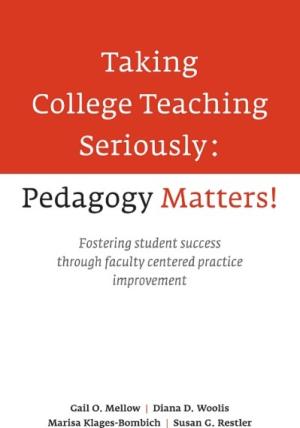
The Global Skills for College Completion (GSCC) initiative, funded by the Bill and Melinda Gates Foundation, is one of many efforts targeting the advancement of community college students, faculty, and institutions across the United States. Faculty selected to participate in the initiative taught developmental courses, documenting and analyzing pedagogical practices using Web 2.0 tools in order to facilitate communication and collaboration around teaching and learning. Regular and consistent forms of peer feedback, coaching, and reflection required participants to learn with, and from, one another. Primarily intended for college instructors, Taking College Teaching Seriously promises to broaden the impact of their faculty practice improvement model by encouraging the application of these processes by instructors of all types of courses in all institutional contexts of higher education. The value of this book for faculty lies in its accessibility and in its applicability: any faculty member, or group of faculty members of the same institution or across institutions, can easily replicate one or more of the processes described and explained in this book and so heighten their potential for acquiring some of the lessons learned. Although there are many useful components in this engaging book, it should be recognized that in the larger context of scholarship on teaching and learning the book contributes to that body of work focused on the significance of reflection as a faculty practice. While faculty assessment is a built-in feature of college courses through peer visits and course evaluations, and a standard requirement in faculty review processes over the course of a career, faculty reflection on teaching and learning is often underemphasized and much less institutionalized. Furthermore, when faculty reflection on teaching and learning does occur, it often is an isolated practice intended to address a particular issue or recurring problem experienced in a specific course. However, the movement toward institutionalizing faculty reflection practices appears to be growing steadily and assuming a variety of forms. One form highlighted in this book is the formation of an online community of practice (24-26). Put simply, a community of practice typically serves a small group of faculty with a shared interest who agree to organize themselves around work on a common issue or goal. In some cases, the formation of a community of practice may be connected to teaching and learning initiatives at a particular institution. However, as technological practices continue to become more embedded in college curricula and teaching, the design and implementation of online communities of practice may prove more practical and more beneficial to faculty development and support. Furthermore, communities of practice may transcend disciplinary boundaries; while the faculty participating in this initiative had primary expertise in mathematics and English, such practice readily extends to those in other disciplines as well.
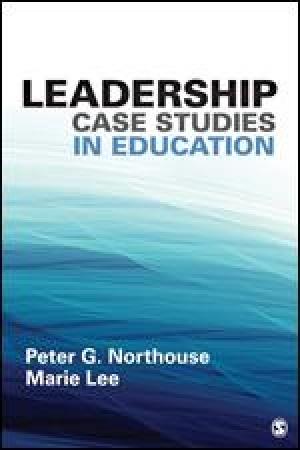
Northouse and Lee adopt the definition of leadership put forth by Northouse in his influential textbook Leadership Theory and Practice: “Leadership is a process whereby an individual influences a group of individuals to achieve a common goal” (2). The co-authors state that the common goal of educators is “to create a safe place where students can effectively learn and grow” and so it follows that leadership – the process of influence – is central to the educators’ vocation (2). During the past one hundred and fifty years, researchers have offered multiple approaches to understand precisely how leadership works, and Lee and Northouse succinctly summarize various approaches and provide case studies based on actual situations in education to help readers to apply the theoretical concepts. Following their introduction, each of the remaining fifteen chapters in Leadership Case Studies in Education presents one theory for understanding leadership along with two case studies, one focused on K-12 and one in higher education. The first half of the book generally parallels developments in leadership research in the twentieth and twenty-first centuries, beginning with theories that hone in on the leader’s characteristics or actions (trait, skills, and behavior) and moving to theories that explain group processes (situational, path-goal, and leader-member exchange). Chapters eight through ten examine more recent descriptions of th e qualities of a leader presenting transformational, authentic, and service leadership theories. These are followed by chapters on adaptive leadership, psychodynamic approach to understanding leadership, ethics, and team leadership. The book concludes with case studies that highlight the significance of gender and culture. The sixteen higher education case studies cover a range of leadership positions. Three of the case studies feature a university president; six present situations faced by administrators or staff working outside of academic affairs; one is about a student leader; and six focus on faculty. A set of six questions concludes each case study. The first three directly address the case study, while the second set connects the case study to Northouse’s text. Northouse and Lee wrote Leadership Case Studies in Education as a companion text to Northouse’s Leadership Theory and Practice. The case study text offers compact summaries of each leadership theory, which are intended to serve primarily as review of the more thorough presentation and assessment in the main text. For example, in Theory and Practice, Northouse devotes thirteen pages to leader-member exchange theory, describing early and later studies, explaining how the theory works, presenting its strengths and limitations, and suggesting possible application. Case Studies condenses this to less than three pages. Northouse and Lee write that their intended audience is “undergraduate and graduate classes in education and educational leadership,” (ix) so it is not surprising that its usefulness to this audience may be limited. The case studies draw on real-life situations but are missing discussion and analysis. This may be a useful companion textbook for classes in educational leadership, but without the corresponding textbook Leadership Case Studies in Education misses an opportunity to influence readers outside the classroom in the common goal of improving education.
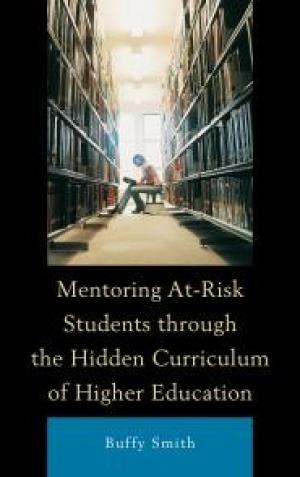
Dr. Smith’s book addresses various issues plaguing the world of higher education in the United States. According to Smith, there is continued disparity between low-income and high-income families’ access to the tools for academic achievement and unconscious cultural favoritism in academic institutions whose institutional culture is primarily informed by a White middle to upper class majority. Both patterns culminate into an amalgam of what Smith refers to as a hidden curriculum which students must master along with the formal curriculum in order to succeed academically. Because obtaining a college degree has the potential to increase a student’s chances at financial security for themselves and their families, being unaware of the hidden curriculum within an academic institution could cost students a great deal. If higher education is still viewed by many Americans to function as “a ladder for upper mobility for the masses of people who were not lucky enough to be born into wealthy families,” then the limitation of access to higher education based on financial or cultural grounds is anathema to the American dream (1). If national morality does not sway the reader, Smith also presents a more utilitarian argument for those who see the civic benefits of a highly educated population (better health care centers, schools, social services, lower crime rates, and a stronger democracy). If those two arguments fall flat, Smith reminds the reader of President Obama’s Administration’s goal to increase the U.S. college graduation rate from 40 percent to 60 percent by 2025 (2). What does this have to do with at-risk students? The population of students often categorized in this way represent a group whose struggles within the university might have more to do with being unaware of the rules of higher education and the hidden curriculum present in their home institutions than a lack of ability, effort, or desire. Smith’s research suggests that one way to help students (at-risk and others) would be to “implement a mentoring model that explicitly teaches students how to decode the hidden curriculum” (55). Smith acknowledges that most educators do not want to admit that cultural and economic favoritism are pervasive in higher education, but research has proven otherwise. According to one 2011 survey referenced by the author, “senior college admission directors admitted to giving preferential treatment to wealthy students even if they had lower grades and test scores” (55). Full-pay and out-of-state students might find entrance into higher education easier than those needing financial assistance. Once low-income and underrepresented students make it onto campus, staying there requires facing challenges of a less overt nature… adjusting to the institution’s culture. Utilizing Pierre Bourdieu’s concept of institutional cultural capital, Smith describes universities as institutions embedded with the norms and values of the dominant group (in this case, often White, upper-class culture). Students are being ‘graded’ not only on their academic ability and progress but also their adherence to these norms and values (the hidden curriculum). According to Smith, the hidden curriculum is important because “teachers use it as an informal indicator of their students’ ability and performance in the formal curriculum” (22). If students are being graded on expectations of which they are unaware, then, per Smith, it is up to these institutions to unveil the hidden curriculum. Smith champions the academic mentor as best suited to teach students about the institutional cultural capital (cultural knowledge, behaviors, and skills that foster academic success). Academic mentors have insider knowledge of how their university works and often have access to privileged information and to social networks on campus. Outlining three cycles of mentoring (advising, advocacy, and apprenticeship), informed by four theoretical perspectives (involvement theory, academic and social integration theory, social support theory, and theory on cognitive levels and developmental stages), Smith lays out a clear but also nuanced mentoring method. While studying the systematic marginalization of students uninitiated into the culture of higher education may lead researchers to despair, Smith’s method offers many examples of how mentorship can empower and enrich the lives of both mentees and mentors. Smith’s steps recommend that mentors advise (tell students what they should do), then advocate (motivate and connect students with key resources on campus), and then, in the apprenticeship phase, “empower mentees to transform into powerful social agents who determine their academic destiny” (62-64). Her model does suggest the view that academic mentoring is a great deal like teaching… just at an intensive level. As an academic advisor, I was especially impressed with the conclusion’s section on the benefits of colleges creating mentoring institutions. Having seen students stumble unaware of the institutional culture and academic etiquette required to succeed in higher education, I hope to bring some of these theories and practices to the attention of the advising community at my university. Notably best suited for administrators and faculty within institutions of higher education, this text would also be insightful to any reader interested in education reform, academic advising and mentoring, and social equity in education. It would not hurt readers to have some familiarity with academic theory from the disciplines of sociology and education but the author does not assume that her readers are well versed in either and provides well-summarized definitions of crucial theoretical terms and concepts throughout the book. Perhaps what I found most helpful in the book were the multitude of fictionalized examples (based on actual experiences of students and mentors) of the hidden curriculum in action which illuminated for me the variety of struggles many at-risk students face.
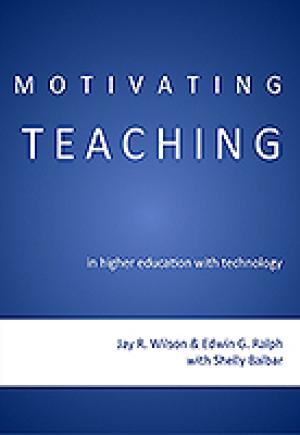
Motivating Teaching in Higher Education with Technology is a useful manual for both beginning and experienced instructors teaching at the post-secondary level. Jay Wilson is the head of Curriculum Studies Department at the University of Saskatchewan. He has extensive practical experience in the areas of technology with specific application to teaching and instructions. Edwin Ralph is a professor with the College of Education at the University of Saskatchewan with mentorship in education expertise. As indicated in the title, this book is about “motivating teaching.” The authors contend that technology serves a supportive role for teaching and learning. For them, “technology, per se, will not improve poor teaching” and “incorporating technology will not change the quality of your content” (103). Beginning with the theme of motivational teaching principles, learning climate and management, and the distinction between teacher- and learner-centered pedagogies, the book then unfolds what this could mean, using specific applications of technology to teaching in subsequent chapters. The authors claim that technology can enhance the quality of teaching significantly when it is being used with thoughtful design and intention. Major benefits of using technology include: making course materials more accessible and available for review (especially for English as second language students), creating frequent opportunities for interaction beyond classroom hours, and encouraging active, participatory learning. As for online courses offerings, technology allows the possibility of bringing in a diverse student body to enrich the learning experience. The authors emphasize the importance of adequate preparation for any kind of teaching but even more so when teaching with technology. Many instructors tend to focus on the preparation of content and may neglect to consider the administrative side of teaching. This book draws the readers’ attention to the importance of good learning “management” in teaching. Attention to course details such as a clearly laid out rubric of grading criteria, class policies, and behavioral expectations for face-to-face and online discussions all contribute to the success of building a positive learning environment. Further strengthening this book are the step-by-step practical suggestions it provides for putting together learning modules, constructing concept maps, designing learning activities, developing questions for student reflection, and crafting effective assessment methods. “Instructors must carefully orchestrate the integration of technologies with appropriate methods and strategies at key junctures to maximize learner motivation” (100). Having taught both hybrid and online courses for over eight years, I find the suggestions insightful and refreshing. Since the book is designed to be a manual, its writing style is concise and does not contain as many real life examples as readers may like to see. Readers will need to do much integration between the principles articulated and application to actual situations in their own teaching contexts.
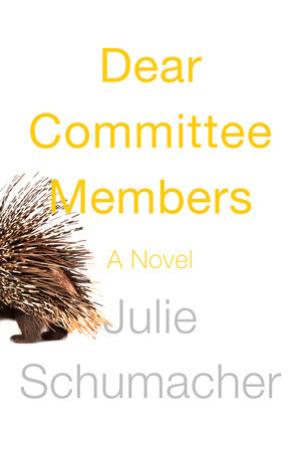
Non-academics who pick up Julie Schumacher’s epistolary novel Dear Committee Members might assume that they are encountering a parody of academic life. Schumacher’s academic readers, however, will wonder whether she sneaked into their own inboxes and printed the choicest items. The novel consists of letters penned by Jason Fitger, a disenchanted and mediocre professor of creative writing and literature in the underfunded English department of Payne University, a less-than-top-tier teaching college. Through his correspondence, Fitger both details and demonstrates most of the mundane (but annoying) challenges and bad behavior of academic life. Fitger writes letters of reference for students he cannot remember, students he can remember all too well for their lackluster performance, and spectacular students whose career choices are dramatically below (their professor’s assessment of) their capabilities. His frustration at having to write letters is made worse by the combination of technology and bureaucracy that has come to characterize online letters of recommendation – Fitger is out of patience with online form submissions, whose character limits will not let him expound as he sees fit and that log him off or cut him off mid word. He often opts instead to send a letter by mail, certain that the institution will, of course, accept a letter postmarked (rather than electronically submitted) on the due date. Fitger’s letters chronicle what are now tropes in the writing about academia – for instance, the crumbling but inhabited humanities building, though in Dear Committee Members the insult is compounded because, as Fitger’s exasperated letters detail, not only are the English department’s digs shabby by comparison to the social sciences, but are being made worse through constant construction as the floor above is renovated for the Economics department. Throughout these letters one gets a sense of the failures of Fitger’s own life. It becomes clear, for instance, that within the administration are both his ex-wife and the (now ex-) lover for whom he left her, and his letters to each intertwine their personal histories with campus politics. Similarly, letters to graduate school friends in the world of creative writing mix advocacy for students with hints of relationships between those successful or not and laments for Fitger’s own squandered promise. While in no way derivative, Dear Committee Members joins the ranks of academic novels such as Moo, Straight Man, and Wonder Boys. Schumacher, herself a professor of creative writing and literature, knows what she is talking about, and she deploys humor to excellent effect, waltzing the reader through an at best underwhelming professor's correspondence, revealing much along the way about the personalities and practices of Fitger and his fellow academics.
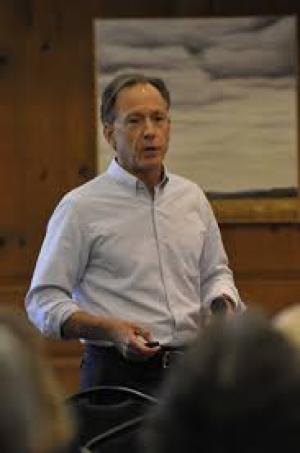
Jeffrey T. Kenney Walter E. Bundy Professor of Religious Studies DePauw University Many Islamicists, specialists in Islam, talk about the challenge of teaching Islam in a post-9/11 world, a world where the War on Terror (WOT), political chaos in the Middle East (exacerbated by the WOT), and global jihadi violence.

Nancy Lynne Westfield Associate Professor of Religious Education Drew Theological School Regardless of how many times pedagogical guru Parker Palmer is asked, he refuses to comply. Dr. Palmer, in his writings, speeches, and workshops, resists reducing the mystical adventure of critically reflective teaching to “tips, tricks, and techniques.” While I
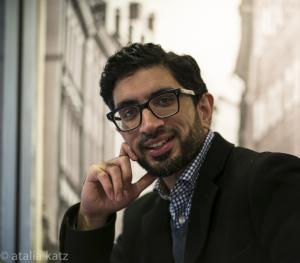
Youshaa Patel Assistant Professor of Religious Studies Lafayette College These days, Islam is no stranger to controversy. Although we may deplore the mainstream media’s deliberate sensationalization of Muslim conflicts, as professors we can also exploit conflict in the classroom to help our students achieve their learning objectives. Many of my.
Wabash Center Staff Contact
Sarah Farmer, Ph.D
Associate Director
Wabash Center
farmers@wabash.edu